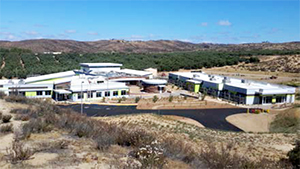Health Facilities Construction

ISSUE
Disparities in health status are affected by access to health services. Health care services are constrained by the limited capacities of existing Indian Health Service and tribal health care facilities. There is a significant need for expansion or replacement of many buildings.
BACKGROUND
Indian health care services are provided in over 883 IHS owned or leased and tribal health care facilities, located mostly in rural and isolated areas. Total space in the Real Property Inventory, including office and staff quarters, is just over 22 million square feet, of which the government owns or leases 55 percent and the tribes 45 percent. The IHS also operates 2,237 staff quarters units to support health care services in remote locations. For many American Indian and Alaska Native people, IHS-supported programs are the only source of health care. Few, if any, non-IHS alternative sources of medical care are available in many cases, especially in isolated areas.
STATUS
The average age of IHS health care facilities is greater than 37 years. Because of increasing user population and insufficient space, many facilities are severely overcrowded. This impedes American Indians/Alaska Natives access to health care and precludes increasing the number of health care providers. When a facility is replaced, the new one is typically three to four times larger than the old one. This expansion provides access to health care for the 10-year projected user population and space for additional staff and some new services.
When the IHS lacks sufficient resources to address ongoing facility operation and maintenance needs, these deficiencies, which could compromise health care, must be added to the maintenance backlog each year. This backlog (IHS and tribal) is approximately $515 million. The reliability of building equipment becomes severely compromised with age, and the potential consequences are compounded by the isolated, rural settings of most facilities. In terms of medical equipment, buildings, and systems equipment, the IHS and tribal health programs have not been able to keep pace with the ongoing changes in medical practices over the years. Medical and laboratory equipment, which has an average useful life of 6 years, generally is used at least twice that long in Indian health care facilities.
OPTIONS/PLANS
- Construction of health care facilities has been identified as a current services need for the IHS because health care facilities are necessary and fundamental for providing access to health care services.
- The IHS is developing new ways to meet space needs, including cooperative ventures with tribes and others. The IHS provides technical support for tribes that are seeking alternative (non-IHS) funding to build or expand health facilities.
- The Joint Venture Construction Program is a popular and competitive program for which tribes can provide health care facilities and in return IHS resources the staffing and operations. .
ADDITIONAL INFORMATION
For referral to the appropriate spokesperson, contact the IHS Public Affairs Staff at 301-443-3593.
October 2016
Download this Fact Sheet [PDF - 69 KB]


